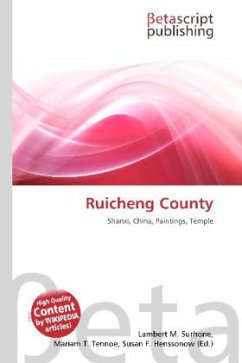Please note that the content of this book primarily consists of articles available from Wikipedia or other free sources online. Ruicheng County is located in the Shanxi province of China. Yongle Gong (Palace of Eternal Joy), is a Taoist temple noted for the wall paintings inside its three main halls. It was moved to Ruicheng in 1959 to preserve it when a dam was built at Sanmenxia, putting the town of Yongle, the previous location of the temple, under water. The temple is 4 km north of the town on the main road. The Yellow River lies just south of Ruicheng. A pumping station on the river doubles as a monument to Yu the Great, the legendary figure credited with controlling the course of the Yellow River and saving many lives in the process. A temple (from the Latin word templum) is a structure reserved for religious or spiritual activities, such as prayer and sacrifice, or analogous rites. A templum constituted a sacred precinct as defined by a priest, or augur. It has the same root as the word "template," a plan in preparation of the building that was marked out on the ground by the augur. Templa also became associated with the dwelling places of a god or gods. This tradition dates back to prehistoric times.
Bitte wählen Sie Ihr Anliegen aus.
Rechnungen
Retourenschein anfordern
Bestellstatus
Storno








